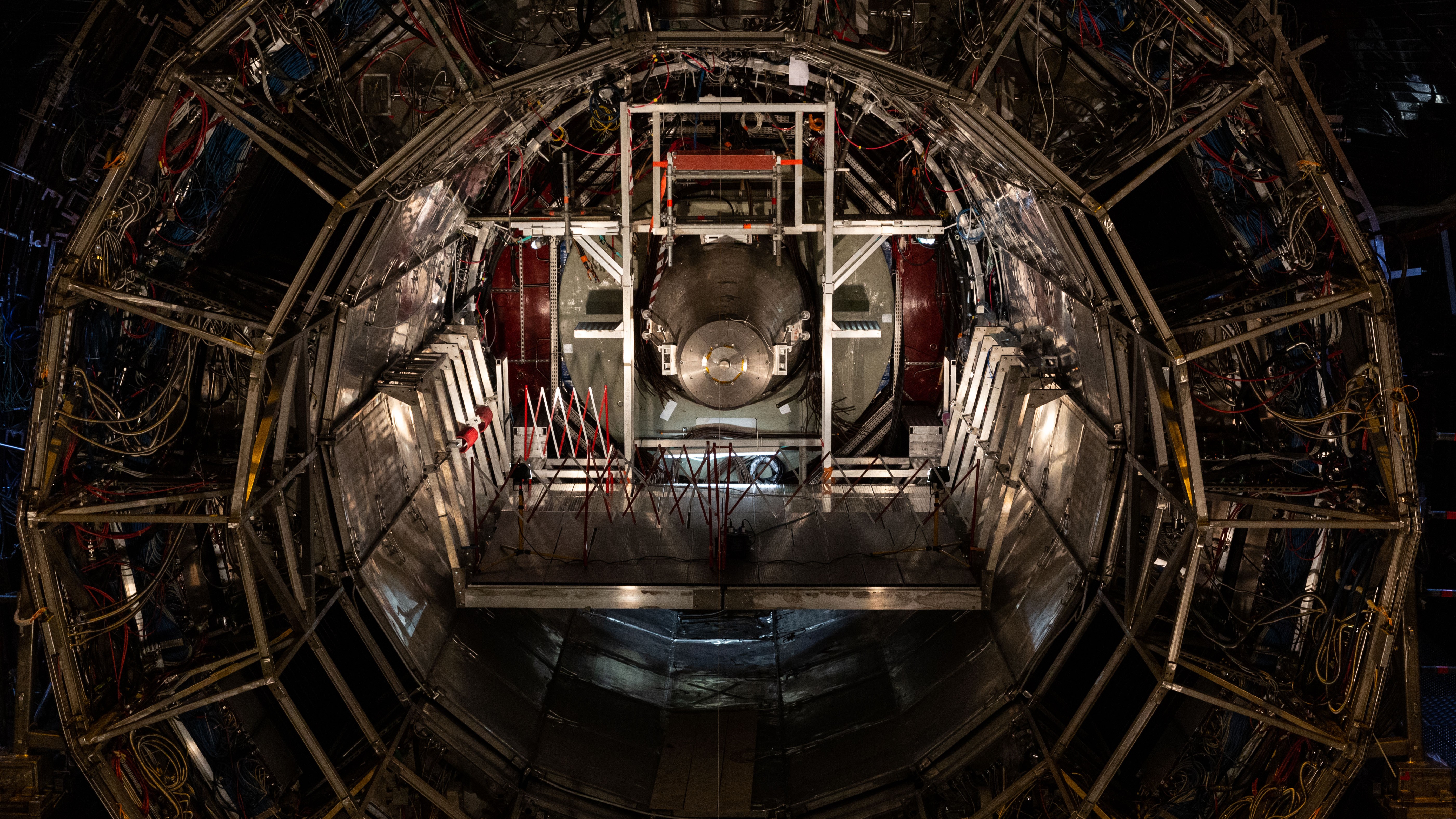Metals in Baby Teeth Could Help Reveal What Causes Autism, ADHD
Traces of metal in baby teeth point to distinct differences between children with and without neurodevelopmental disorders.

Heavy metals found in baby teeth may reveal metabolic problems that potentially contribute to attention deficit hyperactivity disorder (ADHD) and autism spectrum disorder, according to a preliminary new study.
The research is in very early stages. But if children with ADHD and/or autism process metals differently, it may be that these metabolic differences partially cause or exacerbate the conditions. Understanding exactly how that process works could one day help doctors identify children who are at risk for these conditions and potentially shield them from environmental factors that worsen their symptoms, experts suggest.
(Currently, the baby teeth technique cannot be used to help diagnose, prevent or treat autism or ADHD.)
The tooth tissue examined in the study contained trace metals — both biologically essential ones, such as zinc, and dangerously toxic ones, such as lead — that together revealed differences in how the children metabolized the elements in their bodies.
Compared with the teeth from children without neurodevelopmental disorders, the teeth of children with ADHD, autism or both conditions showed patterns of metal metabolism that appeared less complex than metabolic cycles in typically developing children, according to the new study, published Sept. 25 in the journal Translational Psychiatry.
Scientists have long known that exposure to toxic metals can disrupt brain development, but this study suggests there is more to the story, said Dr. Amy Margolis, a medical psychologist at Columbia University Medical Center.
"It isn't only a story of '[metal] exposure leads to bad outcomes' — it's also a story of how different metabolic profiles may make certain people more vulnerable," Margolis, who was not involved in the study, told Live Science. Evidence suggests that ADHD and autism may involve disruptions in the same chemical pathways, Margolis added, and the new study underscores this idea and paves the way for further investigation.
Sign up for the Live Science daily newsletter now
Get the world’s most fascinating discoveries delivered straight to your inbox.
Related: 7 Ways Pregnant Women Affect Babies
In the past, researchers found that people with ADHD have different blood and urine concentrations of various metals — such as lead, mercury, zinc and manganese — than those without the disorder, according to a 2013 review and two 2016 studies. Autism and its behavioral symptoms have also been linked to increased levels of toxic metals, like lead, and depleted levels of essential minerals, like zinc. But blood and urine samples can only capture metals present in a person's system at the time of collection.
"What it can't do is tell you how much [metal] you were exposed to in the past," said study co-author Paul Curtin, a computational biologist at the Icahn School of Medicine at Mount Sinai in New York. Curtin and his colleagues wanted to know how metal influenced the development of ADHD and autism in the womb, so they took a different approach.
Fetal teeth begin budding late in the first trimester of pregnancy and accumulate layer upon layer of enamel between the second trimester and early childhood. The layers form visible lines not unlike "growth rings on trees," Curtin said, and these layers reflect the levels of elements, such as metals, that were circulating in the developing child's bloodstream at different times. By examining patterns of metal exposure archived within the tissue, "we're able to follow the growth rings in the tooth and go back in time," Curtin explained.
The team collected lost baby teeth from 74 children who had previously participated in the Roots of Autism and ADHD Twin Study in Sweden, a cohort that included one group of triplets, 30 complete sets of twins, and 11 individuals from twin pairs. By focusing on twins, the scientists aimed to control for genetic factors that contribute to autism and ADHD and instead focus on markers of metal metabolism that might differ between the children. Thirty-three (45%) of the children had ADHD, autism or both conditions, and the other 41 children (55%) served as a control group for comparison.
With the baby teeth in hand, the scientists rolled out the lasers.
The team aimed concentrated plasma beams at each tooth's enamel to zap through its pearly white surface to the "growth rings" within. The laser generated charged particles within the dental tissue that could then be detected, analyzed and fed into a computer algorithm to reveal distinct patterns of metal embedded in the teeth. The analyses showed that children's teeth bore specific markers of metal metabolism — markers that roughly correlated with whether they had ADHD, autism, both conditions or neither. (The correlation was subtle; it took a computer algorithm to pick out the pattern, and the correlation wasn’t strong enough, or shown in a large enough group, that it could be used to diagnose these conditions.)

The body normally breaks down metals cyclically, meaning the process occurs repeatedly in a consistent pattern and pace, Curtin said. The baby teeth analyses suggest that these cycles are somehow disrupted in children with neurodevelopmental disorders
"We do know that genetics can make a difference on absorption and metabolism of vitamins and minerals," said Dr. Eugene Arnold, professor emeritus of psychiatry and behavioral health at The Ohio State University Wexner Medical Center. Arnold, who was not involved in the study, suggested that researchers could investigate the genetics that drive metal metabolism in animal models of ADHD and autism. That research, in turn, might help scientists better understand the disorders in humans, Arnold said.
Different brain structures form, develop and connect both in utero, and then into early childhood. Because the tooth data show the pattern of heavy-metal metabolism over time, brain scans could then reveal how certain metabolic patterns relate to the volume, structure and connectivity of different brain regions at different stages of development, Margolis said. Scientists could then probe in finer detail how metal metabolism contributes to brain function and human behavior. First, though, she said, the baby teeth experiment should be replicated in an additional, larger sample.
The team behind the new study used their signature tooth technique in a similar 2018 study, in which they studied children with autism in Sweden, the United States and the United Kingdom. Regardless of their location or genetic background, children with autism displayed distinct patterns of zinc and copper metabolism that differed from those of children without autism from each place.
Heightened levels of toxic metals and depleted levels of essential minerals have been linked to neurodevelopmental disorders, but the authors suggest that how a child metabolizes metal may be as important as which elements they're exposed to.
"Of course, it's critical what you're exposed to," Curtin said. "But it's also critical how you process that exposure...The [proper] metabolism of essential elements is clearly required for normal neurodevelopment."
- 11 Facts Every Parent Should Know About Their Baby's Brain
- 7 Ways the Mind and Body Change With Age
- Top 10 Controversial Psychiatric Disorders
Originally published on Live Science.


Nicoletta Lanese is the health channel editor at Live Science and was previously a news editor and staff writer at the site. She holds a graduate certificate in science communication from UC Santa Cruz and degrees in neuroscience and dance from the University of Florida. Her work has appeared in The Scientist, Science News, the Mercury News, Mongabay and Stanford Medicine Magazine, among other outlets. Based in NYC, she also remains heavily involved in dance and performs in local choreographers' work.










